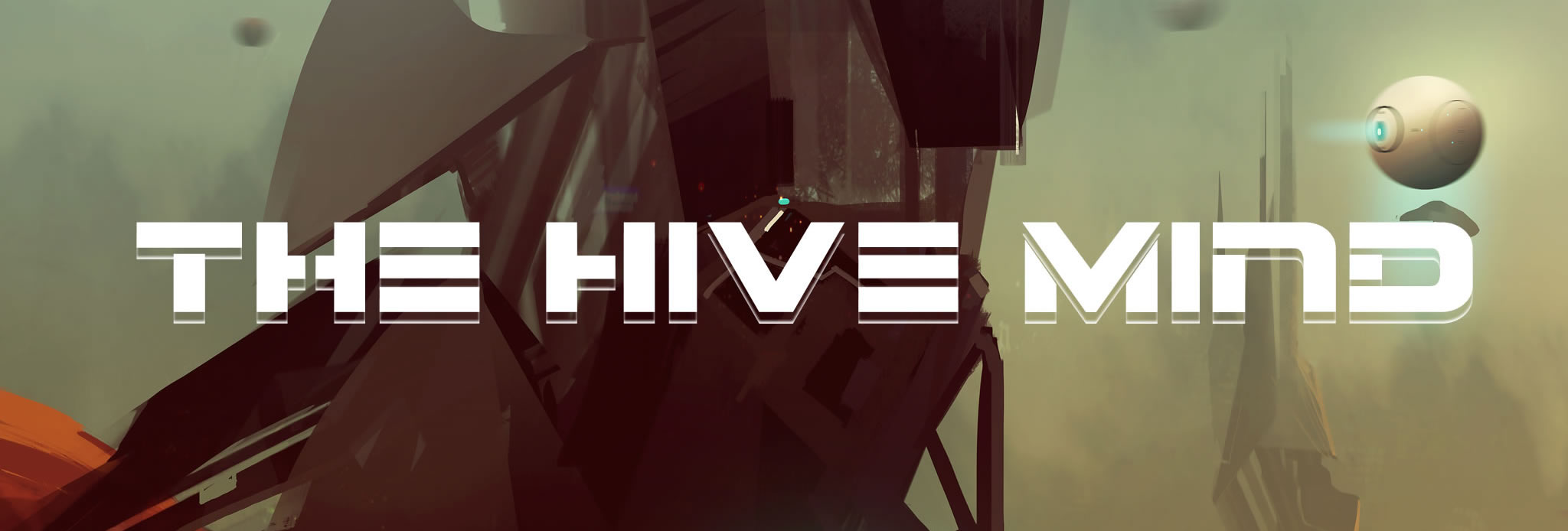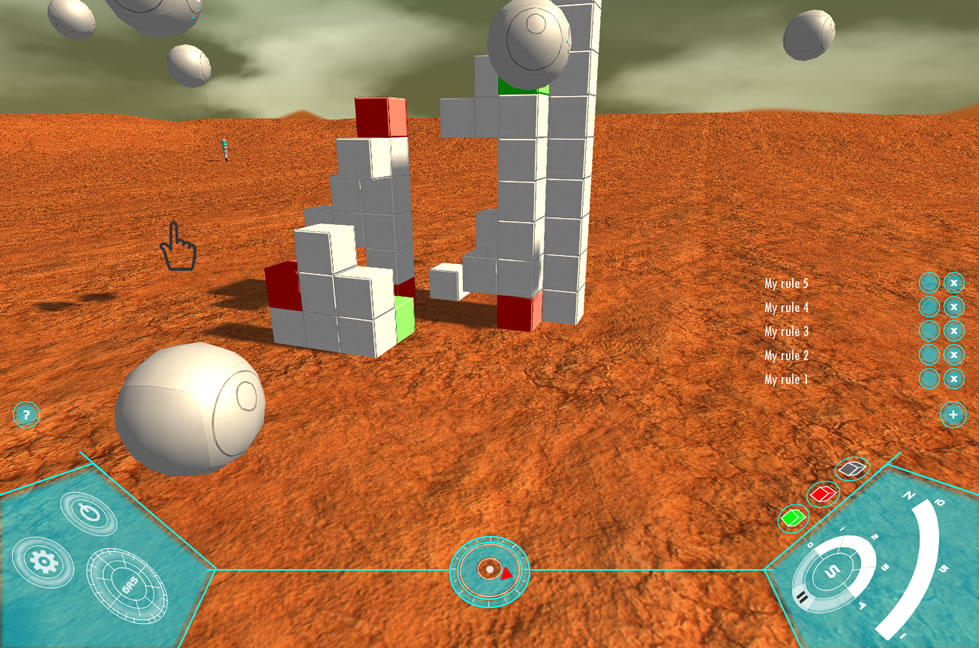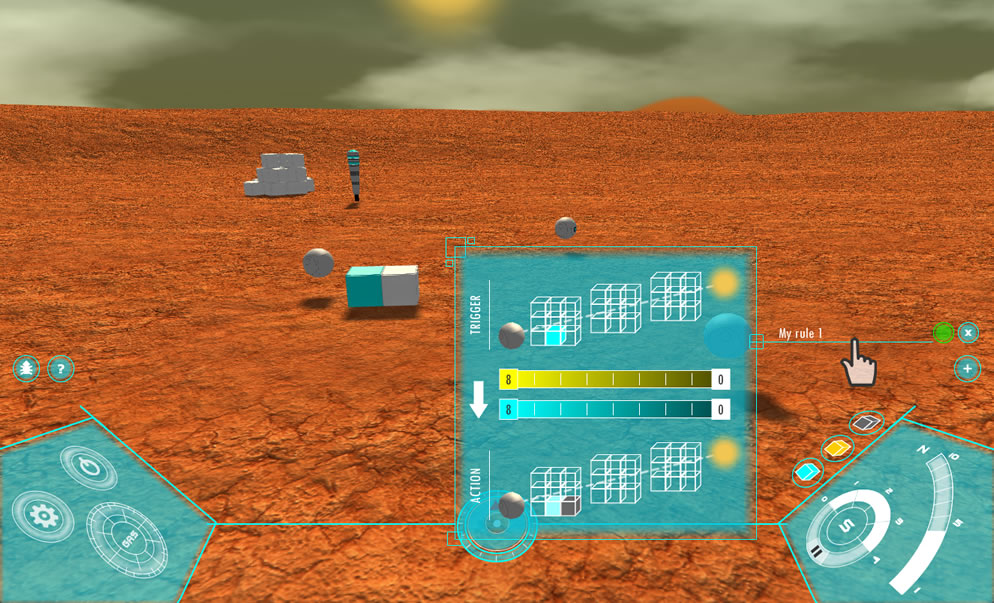- Simulation models
- Novelty detection with robots using the Grow-When-Required Neural Network
- A Highly Customisable Multi-Robot Foraging Simulation
- Controlling Ant-Based Construction
- Boid Game-Playing through Randomised Movement
- Ultrastable Neuroendocrine Robot Controller
- Neural Networks and the Evolution of Cooperation
- Data science
- Games
- Applications & Web
- Software libraries
[The Hive Mind]
Date: Oct 2016

Technologies used: ActionScript 3, Away 3D, Model-View-Controller, Bash scripts, PHP, CodeIgniter, MySQL, JavaScript, RESTful Web Services, HTML, CSS, Git
The Hive Mind is a sci-fi puzzle game about insect-inspired construction with robots. Try it for free on the official web site
In the game, the player takes on the role of an Overseer who was sent to an alien planet and designs simple rules that robots use to create structures brick by brick. The rule editor allows the Overseer to specify where new bricks will be placed, depending on what a robot currently sees. The main challenge of the game is to create building rules that fit together and result in a meaningful structure, despite of being executed by the robots at random and in parallel to each other. Apart from being a lot of fun, the game also teaches players about collective intelligence.


There are three games modes available: tutorial, challenges and sandbox. The tutorial teaches the player about various aspects of the game and gives them commendations for completion. In the challenge mode, the player has to build pre-specified structures according to blue prints. The player gains experience for completing the challenges and unlocks new challenges as a reward. Finally, the sandbox mode lets the player explore and build their own structures without any restrictions.


Technologies used: ActionScript 3, Away 3D, Model-View-Controller, Bash scripts, PHP, CodeIgniter, MySQL, JavaScript, RESTful Web Services, HTML, CSS, Git
The Hive Mind is a sci-fi puzzle game about insect-inspired construction with robots. Try it for free on the official web site
In the game, the player takes on the role of an Overseer who was sent to an alien planet and designs simple rules that robots use to create structures brick by brick. The rule editor allows the Overseer to specify where new bricks will be placed, depending on what a robot currently sees. The main challenge of the game is to create building rules that fit together and result in a meaningful structure, despite of being executed by the robots at random and in parallel to each other. Apart from being a lot of fun, the game also teaches players about collective intelligence.


There are three games modes available: tutorial, challenges and sandbox. The tutorial teaches the player about various aspects of the game and gives them commendations for completion. In the challenge mode, the player has to build pre-specified structures according to blue prints. The player gains experience for completing the challenges and unlocks new challenges as a reward. Finally, the sandbox mode lets the player explore and build their own structures without any restrictions.
Reception
The game was first introduced to the public during the University of Southampton Science and Engineering Day in 2015, where it received a lot of attention. It also competed at the 9th European Conference on Games Based Learning in Norway, where it was a runner-up in the web-based games category.My Roles
I acquired funding from the University of Southampton to develop The Hive Mind in my spare time while working on my PhD. I contracted freelance artists to create promotional materials and 3D models for the game. I was the sole developer of both the Flash game and the back-end API, and my responsibilities also included marketing.











Comments
[08/04/2021]
{Please enable JavaScript in order to post comments}